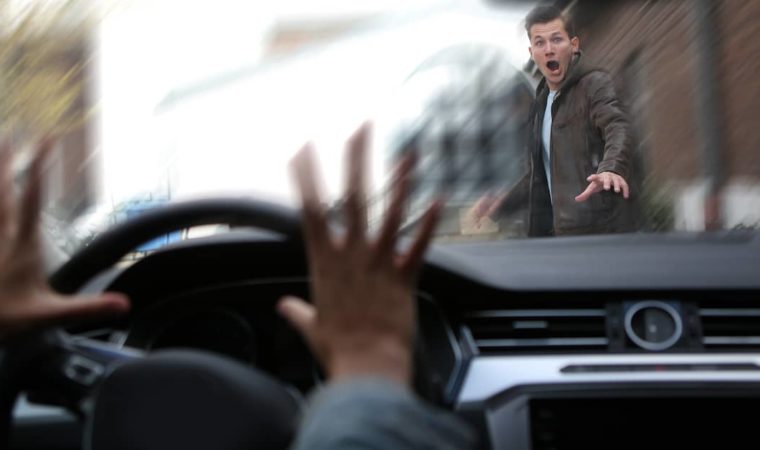
Motorists often fail to exercise the necessary caution when driving. This puts people in other vehicles, on bikes, and on foot at risk. If you or a member of your family was struck by a vehicle, a North Carolina pedestrian accident attorney can help you pursue the compensation you deserve.
Pedestrian injuries in motor vehicle accidents are often serious. In the most extreme cases, they can be deadly.
The Whitley Law Firm makes your well-being and the success of your claim a priority. Please call (919) 785-5000 to speak to a North Carolina pedestrian accident attorney. It won’t cost anything to see if we can help.
How Common Are Pedestrian Accidents in North Carolina?
Pedestrian accidents are a significant problem in North Carolina. The North Carolina Department of Transportation reports that, in Raleigh alone, 153 pedestrians were injured and 13 pedestrians were killed in motor vehicle crashes in 2020 (the most recent year for which data are available).
10 Common Causes of Pedestrian Injuries and Fatalities
Why are pedestrian accidents so common? The simple answer is that many drivers are not as careful as they should be. Negligence on the part of a motorist can take a variety of different forms, with common examples of issues that lead to pedestrian accidents including:
1. Texting Behind the Wheel
Even though texting behind the wheel is illegal in North Carolina, it remains a common cause of pedestrian accidents. When drivers are looking at their phones, they aren’t looking at the road. As a result, distracted driving significantly increases the risk that they will fail to notice a pedestrian in the roadway.
2. Talking on the Phone While Driving
Talking on the phone is also a common cause of injury to pedestrians. Studies have shown that hand-held and hands-free cell phone use both present similar risks in terms of distracting drivers from the task at hand.
Unlike texting, it is legal for drivers in North Carolina to talk on the phone while driving so long as they are over the age of 18. However, drivers still have a duty to ensure that they are not putting others in harm’s way.
3. Other Forms of Distracted Driving
Along with texting and talking on the phone, many other forms of distracted driving can also lead to pedestrian injuries. Some examples include:
- Reading and sending emails
- Using social media and other apps
- Watching videos
- Eating and drinking
- Applying makeup
- Talking to passengers
- Rubbernecking
Anything that takes a driver’s attention away from the task at hand has the potential to lead to an accident. Unfortunately, many drivers fail to uphold this duty, putting themselves and others in danger.
4. Running Red Lights and Stop Signs
Many pedestrian accidents occur at intersections, and these accidents frequently happen as a result of drivers running disregarding traffic signs and signals. Despite the obvious dangers of running red lights and stop signs, far too many drivers still choose to put themselves and others at risk for injury.
5. Failure to Yield to Pedestrians’ Right of Way
In some cases, even if a driver has a green light, pedestrians can still have the right of way. For example, if a driver is attempting to turn at an intersection with a controlled crosswalk, the driver must generally yield to pedestrians in the crosswalk when the “Walk” sign is lit. Right-turn and left-turn accidents at intersections are both common causes of injury to pedestrians.
6. Inattentiveness
Inattentiveness behind the wheel is another frequent cause of pedestrian injuries. Oftentimes, drivers hit pedestrians simply because they aren’t paying attention to their surroundings. Drivers need to anticipate that pedestrians may be walking along or crossing the road, and they need to operate their vehicles accordingly.
7. Impatience
Another common factor that leads to pedestrian accidents is driver impatience. When driving in areas where pedestrians may be present, motorists need to be cautious and respect pedestrians’ rights.
Speeding through intersections, attempting to turn in front of pedestrians, and trying to intimidate pedestrians to get out of the way are all dangerous behaviors that can lead to serious or fatal injuries.
8. Reckless Driving
Even if a driver isn’t being impatient, driving recklessly can still put pedestrians at risk for injury. Again, when drivers are operating their vehicles in areas with pedestrian traffic, they need to slow down. They need to assume that pedestrians may be entering the roadway, and they need to err on the side of caution.
9. Drug and Alcohol-Impaired Driving
Consuming drugs or alcohol can impair drivers’ visual acuity, decision-making, reaction time, and manual dexterity. All of these factors significantly increase the risk that impaired drivers will hit pedestrians.
There is no excuse for driving under the influence. Pedestrians and their families can – and should – seek just compensation for drunk driving accidents and crashes caused by drivers who abuse prescription medications and illegal drugs.
10. Drowsy Driving
Drowsiness can have similar effects to drug or alcohol impairment. When driving late at night, early in the morning, or after a long shift at work, drivers are at a greater risk of being in an accident.
Just like the other issues discussed above, drowsy driving is negligent driving. Motorists who put pedestrians in harm’s way deserve to be held fully accountable.
Contact a North Carolina Pedestrian Accident Attorney Today
Pedestrians are among the most vulnerable road users. Whether they are crossing the road or walking through a parking lot, the threat posed by careless drivers cannot be overstated.
If you or someone you love has been harmed in a pedestrian accident for which the driver was at fault, contact the Whitley Law Firm today. Our North Carolina pedestrian accident attorneys serve clients in Raleigh, Kinston, New Bern, and throughout the state.


